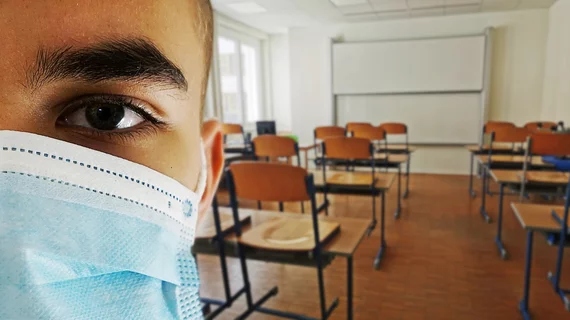COVID classroom: Virtual interventional radiology course earns praise from medical students
In response to the COVID-19 pandemic, medical education has been forced to transition toward online courses. Interventional radiology has been particularly affected by the current environment, but a team of experts recently shared their success implementing a virtual course they say others can build on.
Radiologists with the University of Pennsylvania’s Perelman School of Medicine detailed their two-week virtual IR elective curriculum Tuesday in Academic Radiology. As part of the coursework, students complete daily IR resident conferences, trainee-led case review sessions and specialized lectures.
A small group of students completed the course—which required 40 hours of “student effort” per week—leaving positive reviews, according to Daniel M. DePietro, MD, with Penn Medicine’s Division of Interventional Radiology, and colleagues.
“While the core IR clinical experience comprised of hands-on procedures and patient care cannot be replaced, the challenges of finding new ways to engage learners and showcase the scope of IR offers opportunities to positively reshape the future of IR medical student education,” the authors added.
The virtual elective is a two-week course for third-and fourth-year students that’s split between synchronous and asynchronous learning. The latter uses assigned readings or pre-recorded materials to engage enrollees at different times; the other involves real-time interactions between students and teachers. DePietro et al. utilized a flipped classroom model throughout the entire curriculum, which was reviewed and approved by UPenn.
Ten students completed pre-course and seven finished post-course surveys. Most of whom were surgical residents (50%), with 30% in IR and 30% diagnostic radiology.
After the course, students reported a better grasp of what IRs do and the procedures they perform, the authors noted. Before, 50% said they had little knowledge of the field. They also felt more comfortable knowing when to consult IR and could recall more procedures.
Virtual lectures were one of the most beneficial aspects of the course, according to student responses. This was also one of the most different pieces of the curriculum, with the virtual iteration including many more lectures, DePietro and colleagues explained.
Lack of involvement in clinical care and procedures was the largest difference. This could be remedied via high-quality video content or livestreaming cases during surgical rotations, the authors noted. Such blended-learning may be beneficial for the future of IR education.
All in all, the authors said educators should use their framework when developing future IR curricula.
“Interventional radiologists must leverage their ability to embrace technology in order to adapt to the increased emphasis on virtual learning in the wake of COVID-19,” the authors concluded. “This successful initial experience with a virtual IR elective provides a framework for continuing IR medical student education during the pandemic and growing the specialty's presence within an increasingly virtual medical school curriculum.”

